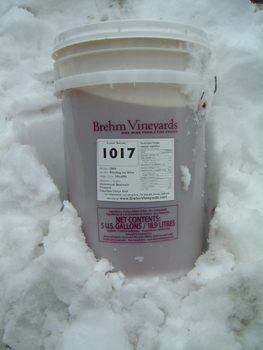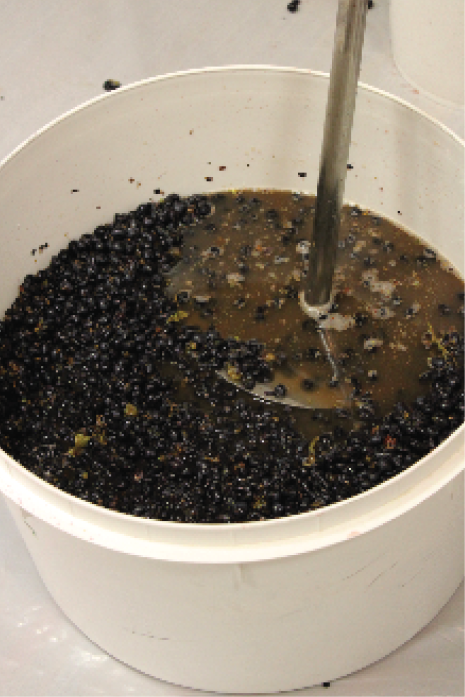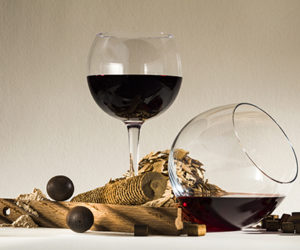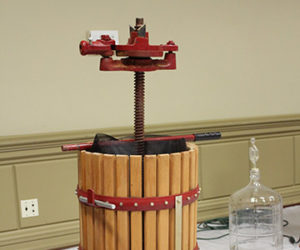
Where to start your winemaking journey can develop in a myriad of ways. Friends or family members showing you the ropes, a general love for wine taken to the next step, or maybe it was something randomly stumbled upon. No matter how you land in this arena, when it comes to your options when starting to make wine, it can seem a little daunting. It can be helpful if you have a person to guide you through. For everyone else, here are some keys all winemakers should know.
Background Check
First off, all winemakers should know that there are six grape species native to North America that grow in various regions throughout the country, all of which can be made into wine. Then there is the classic wine grape species native to Europe, Vitis vinifera, which was introduced to North America. All the classic wine varietals a common wine enthusiast may think of, like Pinot Grigio, Cabernet Sauvignon, and Zinfandel are cultivars of the European Vitis vinifera grape. While various vinifera grapes have found success in certain regions of North America, their success is not universal, which is why if you have ambitions to source local fruit, you may have to look either into the native species or hybrids generated from crossing a vinifera grape variety with one of the native American grape species. (The Baco Noir grape is one example of a hybrid, whose description is found starting on page 19.)
Winemaking Kits
I highly recommend that folks getting into the hobby or trying to nail the winemaking process down on their own, start off with a kit. Even if your ultimate winemaking goal is to just make wines from grapes growing along a fence line in your neighborhood or your ambitions are to make an Opus 1-like wine, you should still start with a kit. This leads us to the question — which kit to choose? Well the good news is that you can’t go wrong with a manufacturer. We live in a golden age of wine kits where manufacturers have done their homework, tested, modified, and re-tested . . . all to get the product right for you. There is a reason year in and year out kit winemakers are able to earn high scores in our WineMaker International Amateur Wine Competition. But this means following their instructions to start. (See the “Techniques” column on page 69 for possible exceptions as you advance.)
When you go to pick up your first wine kit, I highly recommend a mid-level price point. If you execute the wine well, you should end up with something you are quite pleased with. If you do not, well then, at least you didn’t pay for the high-end wine kit. Save the high-end kit lines until after you have several under your belt. As for the low-end kits, I believe they serve a great purpose, but making a low-end kit, say a Cabernet Sauvignon, and making it into a really good wine is actually more advanced wine kit making, in my opinion at least. If you are ready to test yourself and what you’ve learned, take a low-end wine kit and try to make it taste like a higher-end wine. Also, if you’re just looking for an easy drinking porch wine/summer sipper, the low-end kits can fill this role quite nicely. I don’t want to come across sounding like kits are only for beginners, because even highly experienced winemakers will still make wine from kits. Why? Because when you start to understand the basics of the process, then options abound. And unlike making wine from grapes, there is no seasonality to it.
The World Beyond Kits
An alternative to kits for those looking to possibly get a little more hands-on is making wine from frozen juice/must. Why is this considered a step up in your winemaking learning experience? Because with juice, the chemistry of the must is not taken care of by the manufacturer like they are with kits. Factors like pH, TA, and °Brix should be measured and possibly adjusted.
Wine Flavor Components

There are several key flavor components to hone in on when tasting wines: Acidity, sweetness, tannins, alcohol, and color. While the tannins and color are a much bigger component in red wines, they do play a small role in rosés and some whites. For white and rosé wines the balance of acidity and sweetness are one of the keys to their success. Learning the different types of acids of wine, how to measure them, and how they can factor into the overall flavor profiles are key objectives to master. Also playing around with backsweetening can play a pivotal role when acidity levels creep a little too high for your taste.
When it comes to red wines, as mentioned, the tannins and color character plays a much bigger role. Winemakers recognize that both of these characteristics come from a broad class of compounds known as polyphenols. Not only do they provide the color of red wines, they create astringency in the wine (which is a sensation in the mouth), as well as the texture and body to the wine. Digging deeper into polyphenols is beyond the scope of this piece, but you should understand that they come from a few sources: Grape skins, grape seeds and stems, and also from any additional oak. Often red winemakers using fresh grapes can play with the polyphenol levels from these various sources by changing the time before pressing the grapes, deciding whether to remove all stems, how strong to press the grapes, and for oak, the toast level, timing, and origins of the oak. Progression in red winemaking revolves around these key factors.
So my suggestion for those looking to get into the great world of winemaking is to first make sure that you have a firm grasp of the greater world of wine grapes. Next get a firm base under you of the basic steps to winemaking and the important additives. Then finally you can start to adjust those techniques and tasting skills to hone in on how you go from grapes to a glass of wine you’re proud to have crafted.






